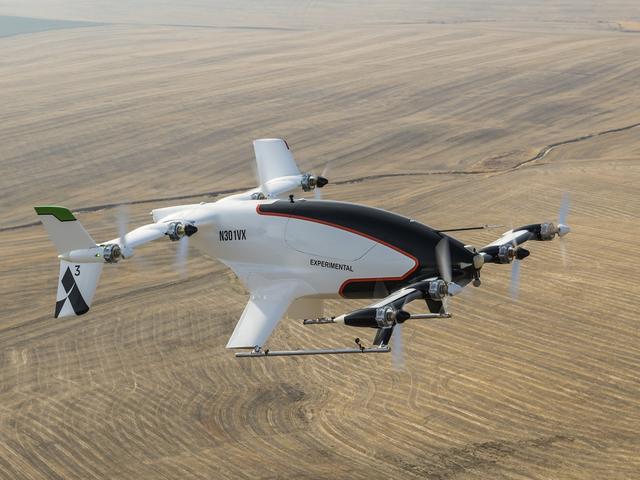



Vahana: Airbus’s Vision for Autonomous Urban Air Mobility
In the world of electric vertical takeoff and landing (eVTOL), few projects have garnered as much attention as Vahana, Airbus’s ambitious program designed to revolutionize urban air mobility. Based in the United States, Vahana is pushing the boundaries of autonomous flight, aiming to create the first fully self-piloted, all-electric, and environmentally friendly air taxi for cities around the world. With the full support of Airbus, one of the largest aerospace companies in the world, Vahana represents a significant leap toward the future of autonomous flight systems.
The Vision: Shaping the Future of Air Mobility
The Vahana project was launched with the goal of addressing key challenges in urban air mobility: congestion, environmental impact, and the need for efficient transportation solutions. Airbus recognized the potential of eVTOLs to transform how people move within cities, leading to the creation of a fully autonomous aircraft designed to operate in urban environments without the need for traditional pilots.
By eliminating the need for a pilot, Vahana envisions a future where air mobility becomes affordable, scalable, and integrated into existing urban infrastructure, providing rapid, clean, and on-demand transportation options to residents of densely packed cities.
The Aircraft: Vahana — A Self-Piloted eVTOL for Urban Transport
At the heart of Airbus’s Vahana project is the Vahana aircraft—a self-piloted, all-electric air taxi designed for short-range urban flight. With a sleek, modern design, the aircraft combines the benefits of helicopter-style vertical takeoff and landing with the efficiency and speed of a fixed-wing aircraft.
Key Specifications:
- Capacity: 2 passengers (initial design)
- Range: 30 miles (48 km)
- Cruise Speed: 120 mph (193 km/h)
- Propulsion: Fully electric with distributed electric propulsion (DEP) system
- Noise Profile: Designed for urban environments, significantly quieter than traditional aircraft
- Autonomy: Fully autonomous with advanced flight control systems for safe, reliable operation
The Vahana aircraft is designed to take off and land vertically like a helicopter, but when it reaches cruising altitude, its wings provide lift to enhance speed and efficiency. With distributed electric propulsion technology, the aircraft’s power is spread across multiple small rotors, ensuring increased safety, redundancy, and smooth operation.
Mission: Autonomous, Efficient, and Sustainable Urban Air Mobility
The mission behind Vahana is to create a new mode of transportation that reduces congestion, minimizes environmental impact, and improves access to transportation in cities. Key elements of the mission include:
- Autonomous Flight: By designing the Vahana aircraft for fully autonomous operation, Airbus is not just envisioning a future where flying taxis are available, but a future where they can be seamlessly integrated into urban transportation systems, without human pilots.
- Environmental Impact: With a fully electric propulsion system, Vahana aims to reduce emissions, contributing to greener cities.
- Urban Integration: Vahana is designed to be fully compatible with smart city infrastructure, working alongside ground-based transportation networks like autonomous cars, buses, and trains.
Strategic Partnerships and Development Progress
Airbus’s Vahana project has made significant strides since its inception:
- First Flight: The Vahana aircraft completed its first successful flight in 2018, marking a significant milestone in the development of autonomous eVTOL technology.
- Testing and Development: Ongoing flight tests, including autonomous operations and performance optimization, are advancing the Vahana toward commercial viability.
- Airbus Collaboration: The project is being closely integrated with Airbus's broader goals in urban air mobility, positioning Vahana as a key player in the company’s CityAirbus NextGen and Urban Air Mobility (UAM) initiatives.
Why Ceekers Should Watch Vahana
For Ceekers—innovators, investors, and tech enthusiasts—Vahana is a key example of the future of air mobility:
- Fully Autonomous Aircraft: The shift from piloted to autonomous air transport will change how we think about aviation, with Vahana leading the way in this space.
- Sustainability: Electric flight is not just an innovation; it’s a necessity in the fight for cleaner cities and a greener future.
- Scalable Impact: As urban populations grow, the need for efficient, scalable transportation becomes more critical. Vahana represents an answer to that problem.
Looking Ahead
With the full backing of Airbus and continued innovation in autonomous flight and eVTOL technologies, Vahana is poised to be a cornerstone of the future of urban air mobility. As Airbus continues its development, the world can look forward to quiet, efficient, autonomous air taxis that could transform city travel and connect neighborhoods that are currently underserved by traditional transportation systems.


